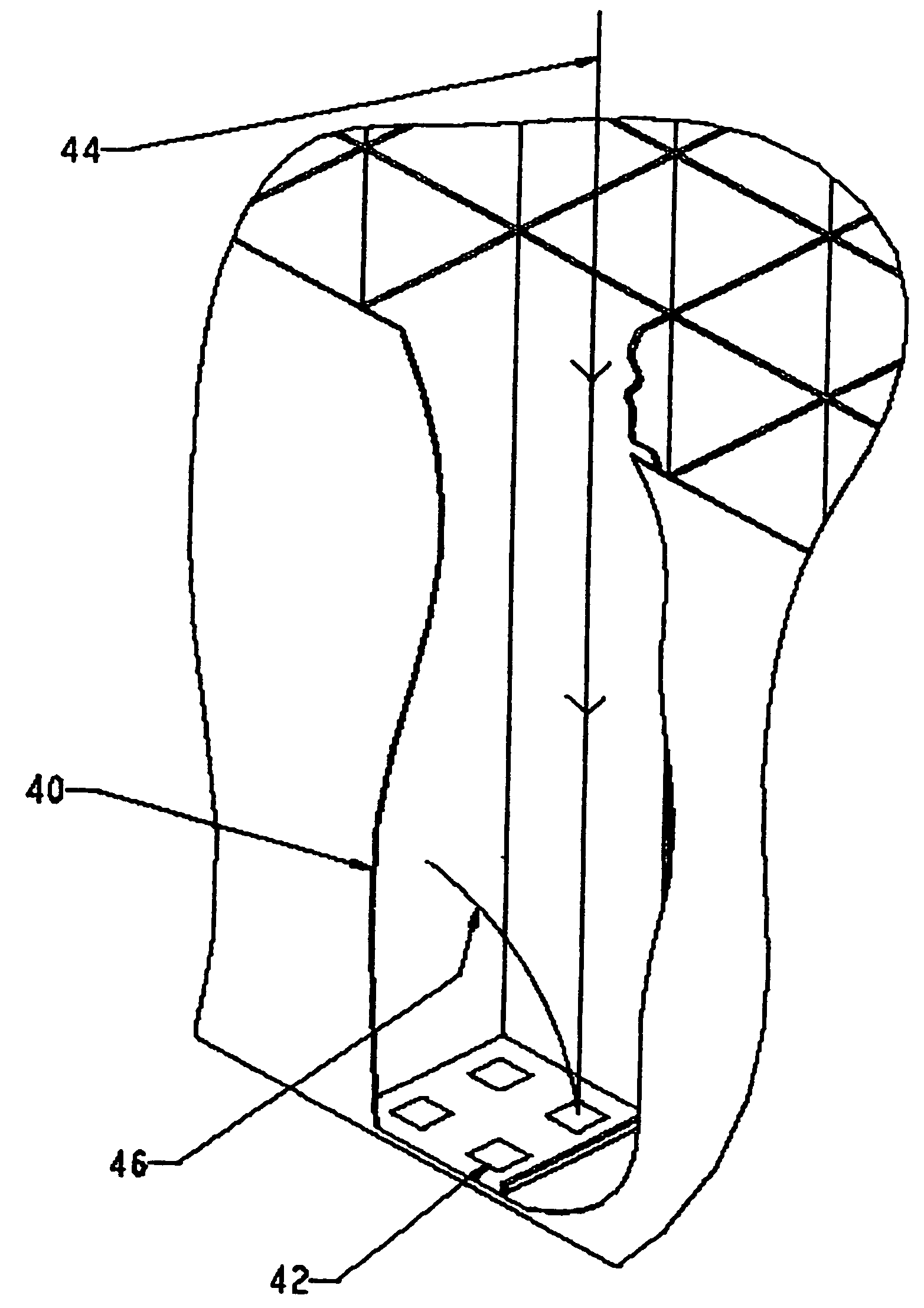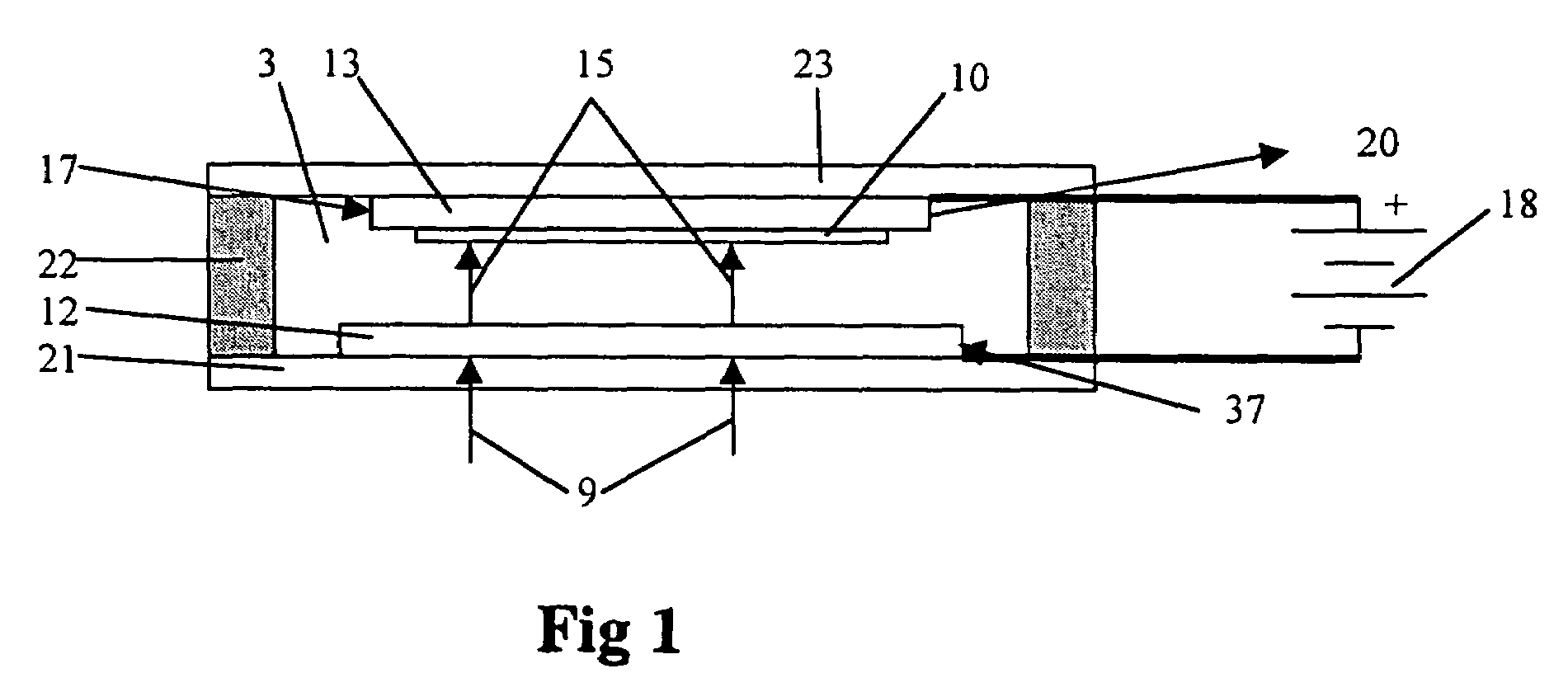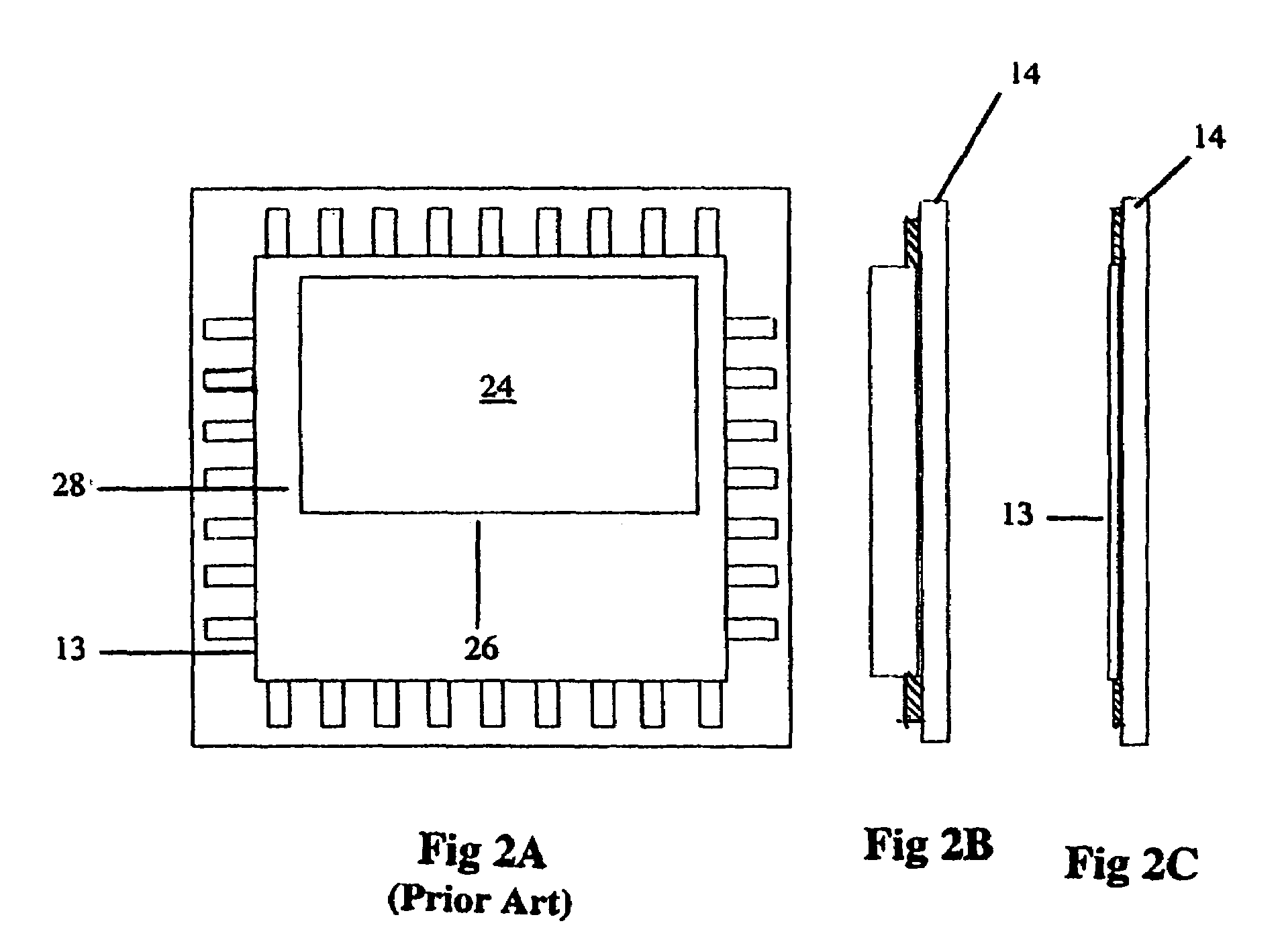Backside thinning of image array devices
a technology of image array devices and backside thinning, which is applied in the direction of diodes, semiconductor devices, radiation controlled devices, etc., can solve the problems of poor resolution, unsuitable non-coplanar surface, and poor processing steps, and achieve uniformly maximized pixel fill factor and low cost. , the effect of reducing the amount of electron scattering
- Summary
- Abstract
- Description
- Claims
- Application Information
AI Technical Summary
Benefits of technology
Problems solved by technology
Method used
Image
Examples
Embodiment Construction
[0028]The context of the invention is illustrated in FIG. 1 where there is shown an example of an electron bombarded active pixel array component including a vacuum enclosure 3 which houses a photocathode 12 such as a GaAs, an InP / InGaAs, a transferred electron photocathode, or a multi-alkali photocathode, in proximity focus with a specialized active pixel array sensor chip 13 which forms the anode for receiving the proximity focused photoelectrons from photocathode 12 to which an acceleration voltage 37 is applied. In accordance with this invention the active pixel array sensor 13 is mounted with its backside 10 facing the photocathode 12. Photoelectrons 15 are emitted from photocathode 12 in response to incident light illustrated as arrows designated 16. Optical components, not shown, are typically employed to form an optical image on the photocathode. Any projection system may be used to place an image on the photocathode.
[0029]The photoelectrons 15 are accelerated by an applied ...
PUM
 Login to View More
Login to View More Abstract
Description
Claims
Application Information
 Login to View More
Login to View More - R&D
- Intellectual Property
- Life Sciences
- Materials
- Tech Scout
- Unparalleled Data Quality
- Higher Quality Content
- 60% Fewer Hallucinations
Browse by: Latest US Patents, China's latest patents, Technical Efficacy Thesaurus, Application Domain, Technology Topic, Popular Technical Reports.
© 2025 PatSnap. All rights reserved.Legal|Privacy policy|Modern Slavery Act Transparency Statement|Sitemap|About US| Contact US: help@patsnap.com



